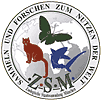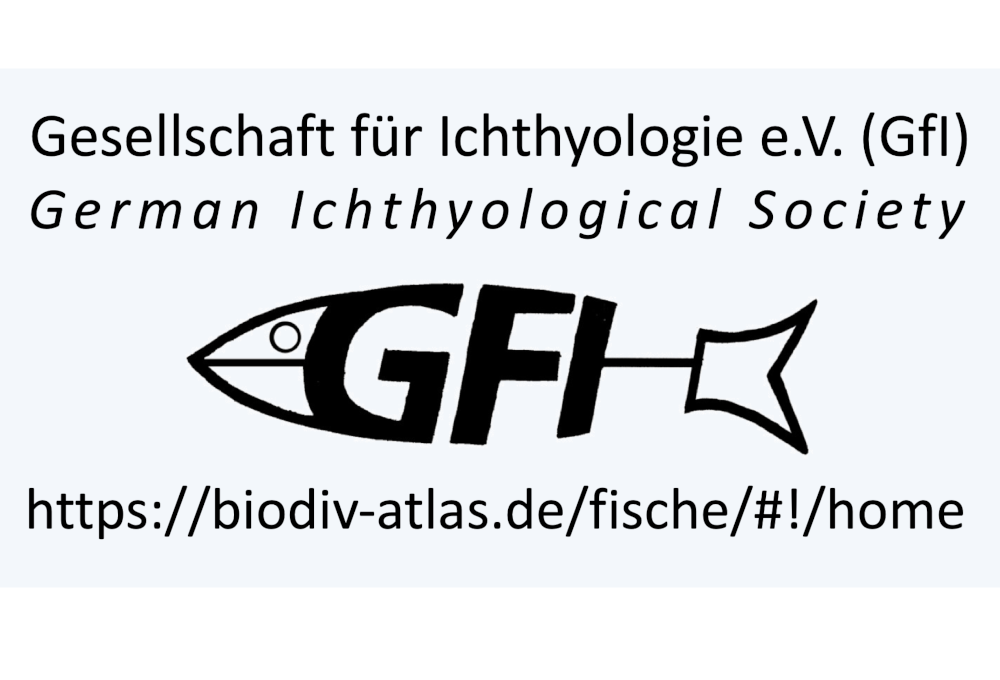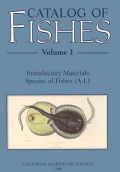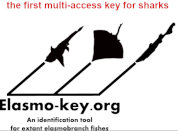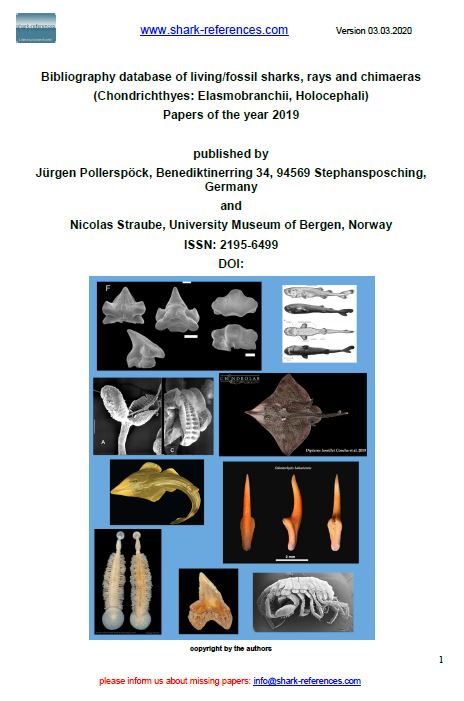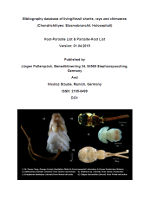Galeocorax jaekeli
(Woodward, 1895)
Classification: Elasmobranchii Lamniformes Pseudocoracidae
Reference of the original description
Note on a supposed tooth of Galeocerdo from the English Chalk. Annals and Magazine of Natural History, (Series 6), 15, 4–5
Note on a supposed tooth of Galeocerdo from the English Chalk. Annals and Magazine of Natural History, (Series 6), 15, 4–5
Image of the original description
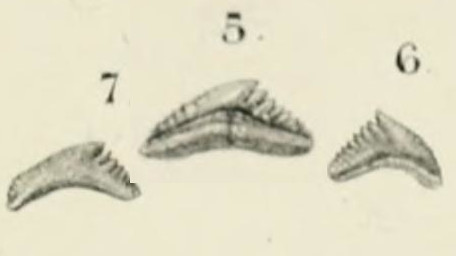
Galeocorax jaekeli (Woodward, 1895), image of the first description, Tab. 1 Fig 5-7 (Fig. 6 holotype) Kent

Galeocorax jaekeli (Woodward, 1895), image of the first description, Tab. 1 Fig 5-7 (Fig. 6 holotype) Kent
Synonyms / new combinations and misspellings
Corax aff. jaekeli, Corax jaekeli, Galeocerdo jaekeli
Corax aff. jaekeli, Corax jaekeli, Galeocerdo jaekeli
Description:
Citation: Galeocorax jaekeli (Woodward, 1895): In: Database of fossil elasmobranch teeth www.shark-references.com, World Wide Web electronic publication, Version 12/2025
Please send your images of "Galeocorax jaekeli" to info@shark-references.com
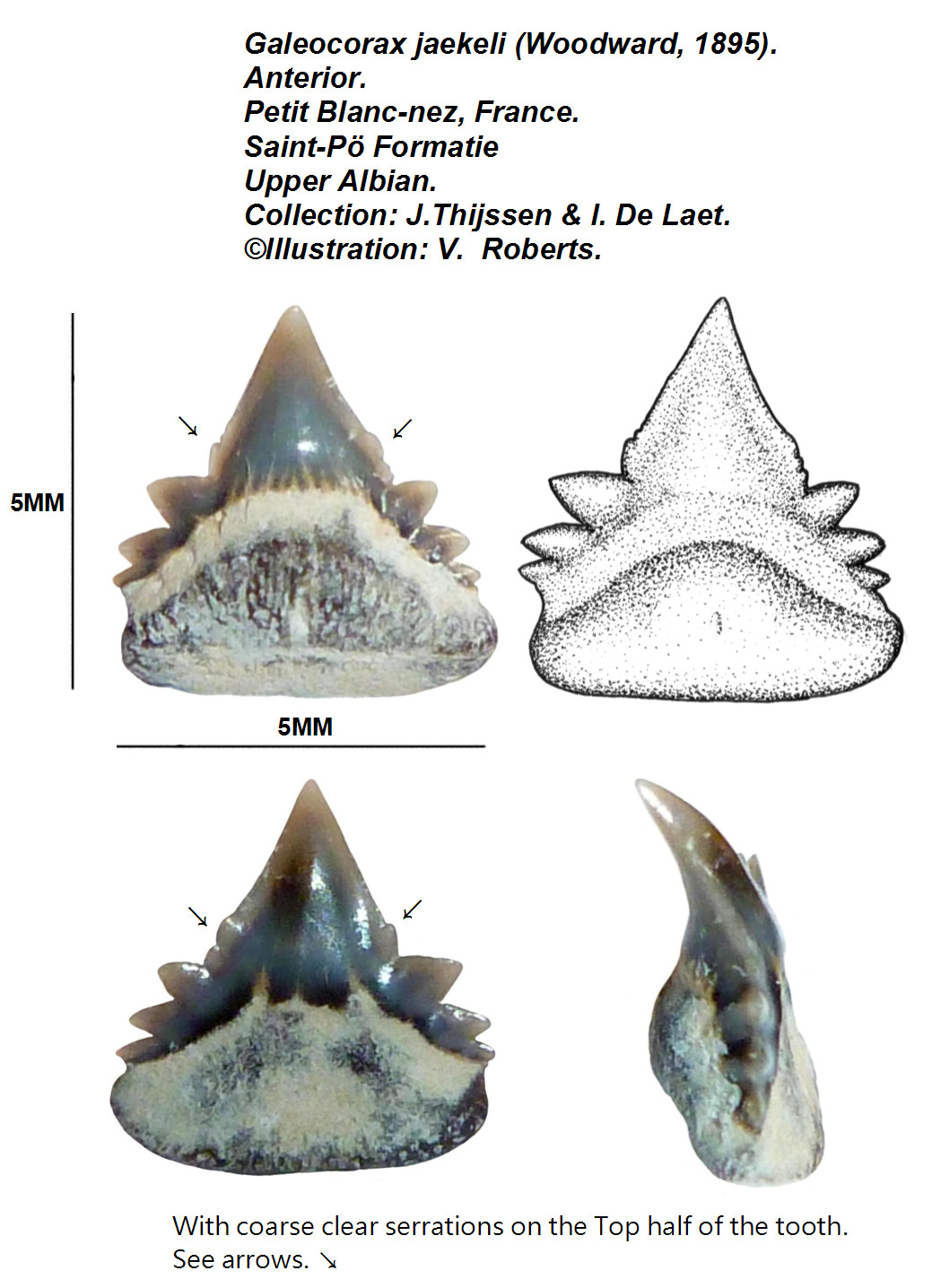
Galeocorax jaekeli (Woodward, 1895), Petit Blanc-nez, France, Saint-Po Formation, Upper Albian, Collection: J. Thijssen & I. De Laet © V. Roberts

Galeocorax jaekeli (Woodward, 1895), Petit Blanc-nez, France, Saint-Po Formation, Upper Albian, Collection: J. Thijssen & I. De Laet © V. Roberts
Description
Original diagnosis after Woodward (1895) p. 4-5 [2600]: The teeth are shown of the natural size in Plate I. figs. 5-7, the first or type specimen being exposed from the inner asjiect, the others exhibiting the outer face. The crown is very low and its apex turned sharply backwards ; the anterior coronal margin is gently arched and marked towards the base with a few feeble denticulations ; the apex above the posterior notch is small and narrow; the margin below the posterior notch is much elongated and exhibits from seven to nine conspicuous denticles, decreasing in size backwards. The root is narrow, and the nutritive foramen on the inner side is in a deep vertical groove (fig. 5).
These Cretaceous teeth are much smaller than those of the typical Galeocerdo of Tertiary and Recent date, and differ from the majority in their remarkably low crown and the relatively small size of the apex of the tooth. They are most nearly paralleled by the teeth named Galeocerdo lutidens from the Eocene of Bracklesham ; but even the latter exhibit a much more prominent apex and relatively smaller posterior denticles. They are thus distinctly new and may receive the provisional name of Galeocerdo Jaekeli, in compliment to the author of the most important contribution hitherto made to our knowledge of the extinct Carchariidae (O. Jaekel, Die eocänen Selachier von Monte Bolca (1894), pp. 156-175).
Original diagnosis after Woodward (1895) p. 4-5 [2600]: The teeth are shown of the natural size in Plate I. figs. 5-7, the first or type specimen being exposed from the inner asjiect, the others exhibiting the outer face. The crown is very low and its apex turned sharply backwards ; the anterior coronal margin is gently arched and marked towards the base with a few feeble denticulations ; the apex above the posterior notch is small and narrow; the margin below the posterior notch is much elongated and exhibits from seven to nine conspicuous denticles, decreasing in size backwards. The root is narrow, and the nutritive foramen on the inner side is in a deep vertical groove (fig. 5).
These Cretaceous teeth are much smaller than those of the typical Galeocerdo of Tertiary and Recent date, and differ from the majority in their remarkably low crown and the relatively small size of the apex of the tooth. They are most nearly paralleled by the teeth named Galeocerdo lutidens from the Eocene of Bracklesham ; but even the latter exhibit a much more prominent apex and relatively smaller posterior denticles. They are thus distinctly new and may receive the provisional name of Galeocerdo Jaekeli, in compliment to the author of the most important contribution hitherto made to our knowledge of the extinct Carchariidae (O. Jaekel, Die eocänen Selachier von Monte Bolca (1894), pp. 156-175).
References

Global impact and selectivity of the Cretaceous-Paleogene mass extinction among sharks, skates, and rays. Science, 379, 802–806
DOI: 10.1126/science.abn2080

Climate cooling and clade competition likely drove the decline of lamniform sharks. Proceedings of the National Academy of Sciences of the United States of America, 116(41), 20584–20590
DOI: 10.1073/pnas.1902693116

Les Sélaciens des terrains néocrétacés et paléocènes de Belgique et des contrées limitrophes. Eléments d'une biostratigraphie intercontinentale. Mémoires pour servir à l'explication des Cartes géologiques et minières de la Belgique, 15, 1–401
On the fossil fishes of the Lithuanian Chalk. I. Selachii. Mémoires de la Faculté des Sciences de l'Université de Vytautas le Grand, 9, 243–305
The Fossil Fishes of the English Chalk. Part VI. Monograph of the Palaeontographical Society London, 64, 185–224

Global impact and selectivity of the Cretaceous-Paleogene mass extinction among sharks, skates, and rays. Science, 379, 802–806
DOI: 10.1126/science.abn2080

Climate cooling and clade competition likely drove the decline of lamniform sharks. Proceedings of the National Academy of Sciences of the United States of America, 116(41), 20584–20590
DOI: 10.1073/pnas.1902693116

Les Sélaciens des terrains néocrétacés et paléocènes de Belgique et des contrées limitrophes. Eléments d'une biostratigraphie intercontinentale. Mémoires pour servir à l'explication des Cartes géologiques et minières de la Belgique, 15, 1–401
On the fossil fishes of the Lithuanian Chalk. I. Selachii. Mémoires de la Faculté des Sciences de l'Université de Vytautas le Grand, 9, 243–305
The Fossil Fishes of the English Chalk. Part VI. Monograph of the Palaeontographical Society London, 64, 185–224
